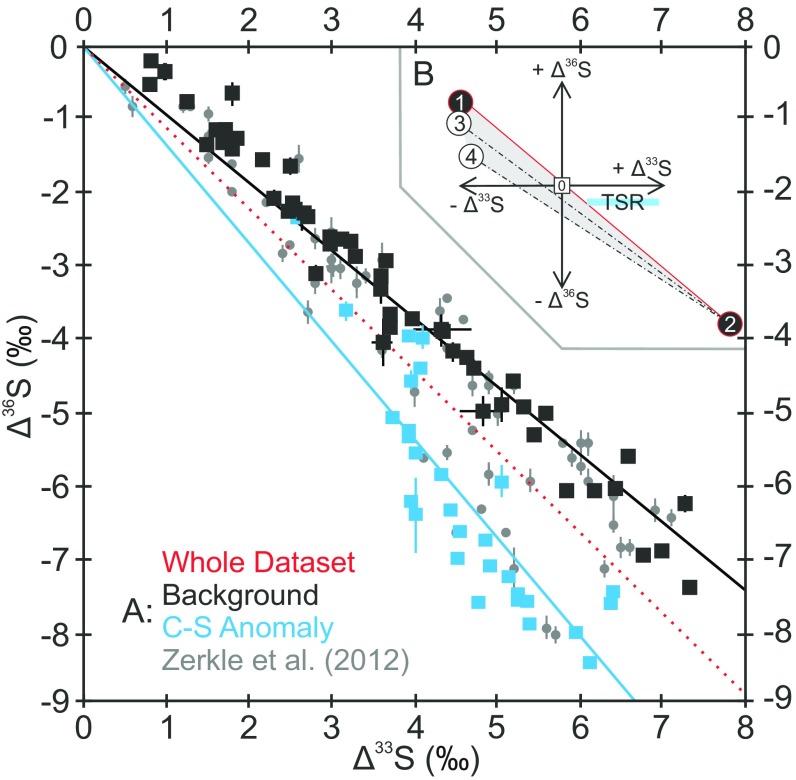Fig. 2.
Quadruple S-isotope data from core GKF01 (A) with a schematic mixing scenario (B). Δ36S vs. Δ33S trends for the new data (black and blue) superimposed on previously published data (gray circles; ref. 9). Regressions are given through the whole dataset (red) as well as through the C-S anomaly (blue) and background (black). Uncertainties are plotted conservatively, using the larger of the internal or external uncertainty (1σ), and are consistently smaller than a single data point. The insert (B) schematically illustrates the range of Δ33S and Δ36S values that can be expressed in pyrite (shaded gray area) formed via mixing of sulfide derived from MSR (open circles 3–4) with atmospherically derived S-MIF carried by sulfate (filled circle 1) and elemental sulfur (filled circle 2). The horizontal blue bar illustrates the Δ36S-Δ33S systematics of TSR derived sulfide. Note, biological activity has the potential to exert greater influence on Δ36S/Δ33S when pyrite carries a negative Δ33S (i.e., derived from sulfate) rather than a positive Δ33S (29) as observed in the C-S anomaly (Fig. 1). Additionally, mixing with TSR-derived sulfide moves the Δ36S/Δ33S to less negative values.

